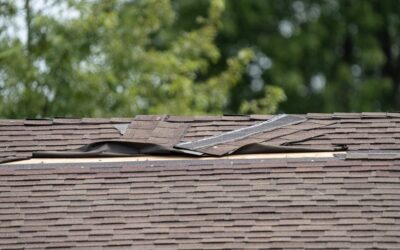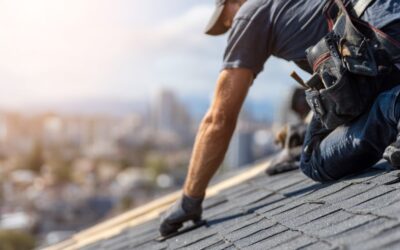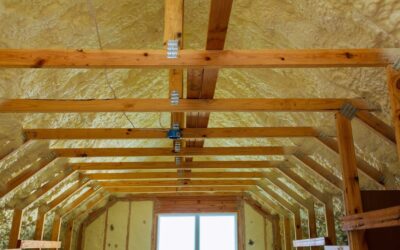Standing Seam Roof Price: A Complete Guide for Homeowners
When considering a metal roof, one of the first things people want to understand is the standing seam roof price. This style of roofing has gained popularity because of its clean look, longevity, and ability to withstand extreme weather. But the cost is always a major factor when deciding whether it’s the right option. To help you make an informed choice, this guide will break down everything you need to know about standing seam roof price, from installation factors to long-term savings and comparisons with other roofing options.
Introduction: Why Standing Seam Roofs Are in Demand
Standing seam roofing is often considered the premium choice among metal roofing systems. Unlike exposed fastener panels, which leave screws visible on the surface, standing seam panels conceal fasteners under interlocking seams. This creates a sleek, modern appearance while reducing the chance of leaks and maintenance issues.
The popularity of this roofing style has surged in recent years, not just for its curb appeal but also because it can last 40–70 years depending on materials and installation. For many homeowners, though, the central question remains: How much does it cost, and what affects the final standing seam roof price?
What Is a Standing Seam Roof?
Before breaking down costs, it’s important to understand what makes standing seam roofing unique.
- Vertical metal panels: Panels run vertically from the roof ridge to the eaves.
- Raised seams: The seams are raised above the roof surface and locked together.
- Hidden fasteners: Unlike traditional metal roofs, screws are concealed under the seams, reducing exposure to moisture.
- Durable finishes: Panels often have protective coatings to resist rust, fading, and scratching.
This design not only creates a crisp, modern look but also adds significant strength and weather resistance.
Average Standing Seam Roof Price per Square Foot
While prices vary across regions and depending on complexity, most standing seam metal roofs cost between $10 and $20 per square foot installed. That means for an average 2,000-square-foot roof, homeowners might spend anywhere from $20,000 to $40,000.
Several key factors influence this range:
- Material thickness (gauge): Thicker steel or aluminum panels cost more but provide better durability.
- Type of metal: Steel, aluminum, zinc, and copper each come with different price points.
- Finish and coating: Premium finishes designed to resist UV rays or harsh coastal conditions add to the price.
- Roof pitch: Steeper roofs are harder to work on and increase labor costs.
- Complexity of design: Dormers, skylights, and valleys make installation more labor-intensive.
- Location: Labor costs and material availability differ by region.
Breaking Down Standing Seam Roof Materials
Steel
- Most common and generally the most affordable option.
- Prices range from $10 to $16 per square foot installed.
- Coatings like galvanized or galvalume extend lifespan.
Aluminum
- Lightweight and resistant to corrosion, especially in coastal areas.
- Costs around $12 to $18 per square foot installed.
- Popular choice for humid or salt-air climates.
Zinc
- Extremely long-lasting, often developing a natural patina.
- Prices start around $15 to $20 per square foot installed.
- More expensive but can last 80+ years.
Copper
- Premium choice with a distinctive look that develops a green patina over time.
- Costs range from $20 to $30 per square foot installed.
- Often chosen for high-end homes or architectural accents.
Standing Seam Roof Price Compared to Other Roof Types
Homeowners often weigh standing seam roofs against alternatives:
- Asphalt shingles: $5–$7 per square foot installed. Much cheaper upfront but lasts 20–30 years.
- Architectural shingles: $7–$10 per square foot, with lifespans around 30 years.
- Cedar shakes: $10–$15 per square foot, lifespan 25–40 years but requires more maintenance.
- Clay or concrete tile: $12–$20 per square foot, very durable but heavy and requires reinforced framing.
Although standing seam is among the more expensive roofing options upfront, its durability and low maintenance often make it cost-effective long-term.
Long-Term Value of Standing Seam Roofing
One of the biggest advantages of investing in standing seam roofing is longevity. While asphalt shingles may need replacement every 20 years, a properly installed standing seam roof can last more than 50 years. Over time, this means fewer replacements, less maintenance, and lower total cost of ownership.
Additional long-term benefits include:
- Energy efficiency: Reflective coatings help reduce cooling costs.
- Reduced maintenance: Hidden fasteners mean fewer chances for leaks or loosening.
- Increased resale value: Many homebuyers see metal roofing as a premium feature.
- Insurance discounts: Some insurers offer lower premiums for metal roofs due to their resistance to hail and fire.
Installation Costs and Labor
Labor is a major component of standing seam roof price. Installing these panels is more complex than laying shingles. Roofers need specialized tools and expertise to crimp seams, align panels precisely, and ensure watertight connections.
- Basic labor costs: $4–$8 per square foot.
- Complex projects: Can climb above $10 per square foot if the roof has multiple valleys, steep pitches, or architectural details.
- Underlayment and insulation: High-quality underlayment is recommended and adds $0.50–$1.00 per square foot.
Because proper installation is crucial for performance, hiring experienced professionals is highly recommended, even if it raises costs.
Regional Variations in Price
Location plays a huge role in final pricing.
- Urban areas: Higher labor costs push prices up.
- Rural areas: Lower labor costs but sometimes limited contractor availability.
- Coastal regions: Aluminum or zinc is often chosen, raising average prices compared to inland steel installations.
- Snow-prone areas: Additional snow guards or reinforced underlayment may be necessary.
Roof Size and Complexity
The size of your roof is one of the biggest factors in calculating total cost. Roofs with multiple angles, dormers, skylights, or chimneys require additional cutting, flashing, and sealing. Simpler gable roofs are less expensive per square foot.
Examples:
- Simple gable roof, 2,000 sq. ft.: $20,000–$25,000.
- Complex roof with multiple dormers, 2,500 sq. ft.: $35,000–$45,000.
- High-end copper standing seam, 3,000 sq. ft.: $60,000+.
Maintenance Costs
Standing seam roofs are low-maintenance compared to other roofing systems, but they aren’t completely maintenance-free.
Typical maintenance includes:
- Periodic inspections (once a year).
- Clearing debris from valleys and gutters.
- Checking flashings and sealants.
Annual maintenance costs are generally $150–$400, which is lower than the upkeep required for wood or asphalt shingles.
Energy Efficiency and Savings
Standing seam roofs often come with reflective coatings that qualify as “cool roofs.” These coatings reflect sunlight instead of absorbing it, lowering attic temperatures and reducing air-conditioning use.
Studies suggest homeowners can save 10–25% on cooling costs in warm climates with reflective standing seam panels. Over decades, these savings can offset part of the initial investment.
Environmental Benefits
In addition to long-term cost savings, standing seam metal roofing is environmentally friendly.
- Most panels contain 30–60% recycled material.
- At the end of their life, panels are 100% recyclable.
- Energy-efficient coatings reduce overall household energy consumption.
Warranty Coverage
Warranties vary depending on the manufacturer and installer. Typical warranties include:
- Paint and finish warranty: 20–40 years against fading, chalking, and peeling.
- Panel warranty: Often covers 40–50 years.
- Workmanship warranty: 5–15 years depending on the contractor.
It’s important to check both manufacturer and installer warranties when comparing bids.
Financing Options
Since standing seam roof price can be steep, many homeowners explore financing.
- Home equity loans: Low-interest rates and long repayment terms.
- Roof financing programs: Some contractors offer in-house financing.
- Energy-efficiency loans or incentives: In certain regions, energy-efficient roofs qualify for rebates or tax credits.
Common Questions About Standing Seam Roof Price
Is standing seam worth the cost?
Yes, for homeowners planning to stay in their home long-term, the longevity, energy savings, and low maintenance make it a worthwhile investment.
Why is standing seam more expensive than corrugated metal?
The concealed fastener system requires more labor and precision. The panels themselves are also more complex to manufacture.
Can I install standing seam over my old roof?
Sometimes, yes—but only if the underlying structure is sound and local codes allow it. A tear-off may add $2–$5 per square foot.
Does color affect price?
Standard colors are usually included, but custom or premium finishes may add $1–$2 per square foot.
Future Trends in Standing Seam Roofing
With more homeowners looking for sustainable, energy-efficient materials, standing seam roofing is likely to grow in popularity. Advances in paint technology, solar panel integration, and lighter materials may also bring down costs or increase energy savings in the future.
Final Thoughts
Standing seam roofing is one of the most durable and visually striking roofing options available. While the initial standing seam roof price can seem high compared to asphalt shingles or even other metal roofing systems, the long-term benefits often outweigh the costs. Its ability to withstand decades of weather, improve energy efficiency, and enhance curb appeal makes it an investment many homeowners find worthwhile.
When budgeting for your new roof, consider not only the upfront cost but also the long-term savings, warranties, and resale value. By understanding all the factors that influence standing seam roof price, you’ll be better equipped to make the right choice for your home. 440-235-3124
 (440) 307-2060
(440) 307-2060




